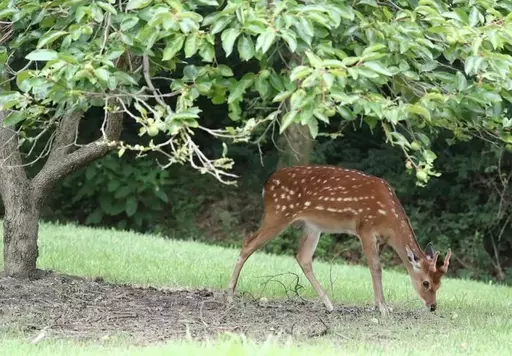The 'Flower Deer', mascot of Seoul Forest, designated as a harmful wildlife
The Flower Deer, loved as a symbol of Seoul Forest, has recently been designated as a harmful wildlife. This is due to the rapid increase in the population of Flower Deer in rural and mountainous areas, causing damage to crops and disrupting the ecosystem, unlike in urban areas.
On the 28th, the Ministry of Environment announced, "Flower Deer not only consume fruits and tree bark but also crops, causing harm to farmers and leading to the death of native plants or destruction of vegetation, thus it is designated as harmful wildlife." As a result, the total number of species designated as harmful wildlife that can be captured and killed with the permission of local government heads has increased to 19.

Originally, native deer such as roe deer and Korean water deer inhabited the Republic of Korea. However, Flower Deer began to be imported from China, Taiwan, and Japan for ornamental and farming purposes starting in the 1960s.
Due to their beautiful appearance and gentle nature, they served as mascots in zoos and tourist sites, and they were also raised by farmers for antler production. However, problems began in the 1980s when some deer farms and tourist sites poorly managed their stock, leading to some being released into the wild.

Flower Deer are highly prolific species, and due to a lack of natural predators such as wolves or leopards in the Republic of Korea, their natural reproduction has proliferated rapidly. Although the Ministry of Environment has not disclosed specific population numbers, data from 2015 estimated that there are over 1,000 across the nation.
In particular, a survey conducted by the National Ecological Institute last year confirmed that there were 937 Flower Deer on Anmado Island in Jeonnam Yeonggwang County and 178 on Guleopdo Island in Incheon Ongjin County. Approximately 1,100 reside on these two islands alone, which is a significantly high density compared to the domestic population density of Korean water deer, which is 7.1 per square kilometer.
In the case of Anmado, it is estimated that the damage caused by Flower Deer to crops over the past five years amounts to around 160 million KRW. Furthermore, it has been continuously argued that population management is necessary as ticks that parasitize Flower Deer can bite humans, leading to high fever, headaches, muscle pain, and in severe cases, death from pneumonia.
Image source: Reference photos for understanding the article / News1


